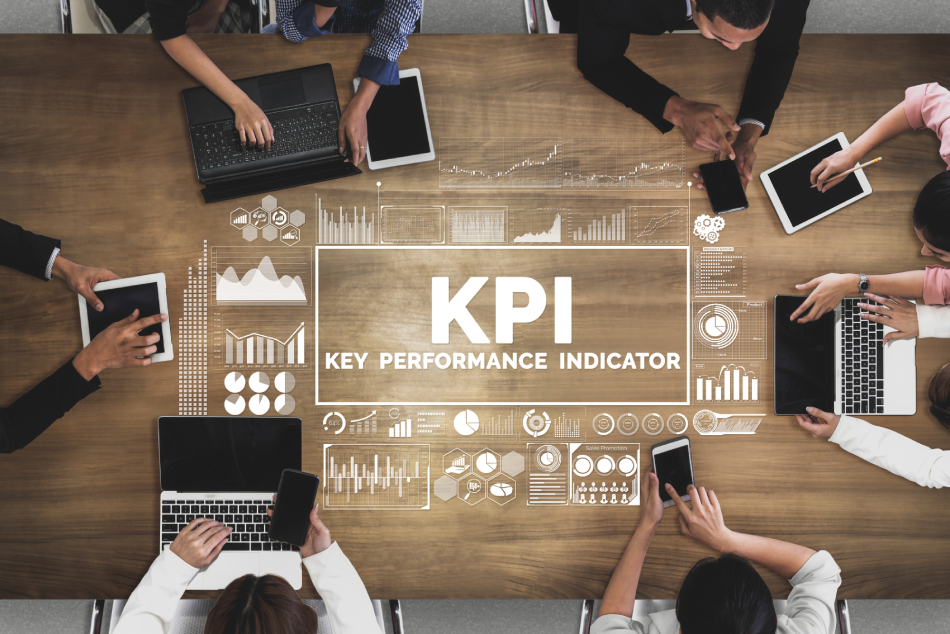Mastering Call Center Operations: Key Metrics and KPIs to Track
Despite being complicated, the operational services provided by the call center are crucial to business growth. The metrics and KPIs track customer experience and improve group productivity. While it is complex to satisfy customer needs, well-structured standards improve performance and operational effectiveness.
The call center metrics provide a quantifiable way to assess customer service and agent productivity. The executives handling customer queries use metrics and KPIs to leverage their performance rates. The group completes its tasks and takes action to achieve the call center’s objectives. For a vast customer experience, the managers monitor the performance rate and focus on operational issues. Inbound and outbound call center outsourcing require metrics to track the number of calls made and received.
Call Center Metrics and KPIs to Enhance Customer Experiences
A satisfying customer experience has a significant long-term impact on the call center industry. The agent’s use of the right tone with customers highly impacts the user’s behavior towards the products or services. For longer customer retention, it is necessary to understand the complexity of queries and use metrics to resolve them accordingly.
First Contact Resolution (FCR)
First Contact Resolution (FCR) is the priority step for call center leaders. It is one of the first call center metrics on the list, as this measure ensures resolution the first time. Through FCR, the contact center leads to high customer satisfaction and solves queries in one call, reducing the cost-to-serve rate.
In both instances, in the first approach, the calls received and resolved at the first attempt create an FCR. It shows that the team is performing well and tackling the issue within the time frame. The second approach includes the number of calls resolved at the first attempt, excluding repeat calls. To calculate the FCR,
divide the total number of calls resolved on the first attempt by the number of calls received. Divide by the total number of calls resolved on the first attempt.”
Net Promoter Score (NPS)
The NPS is another metric used to measure customer loyalty and satisfaction. The customers rate the services on a 0–10 scale. The Promoters are the ones who provide the message with the highest rating and spread it among others. Passive customers are the ones who sometimes use the services and switch. The detractors are customers with the lowest reviews about the service.
“The total NPS is the difference between the percentage of customers who are promoters and those who are detractors.”
Customer Effort Score (CES)
Like the NPS, the CES is a trustworthy metric. Here, it evaluates customer responses via a closed-ended survey method about the efforts put into resolving a query. The system tracks responses to measure customer loyalty and satisfaction. The feedback can range from “low effort” to ‘very high effort. The rating scale uses numbers from five to seven. And to calculate the CES,
“find the difference between the percentages of agreeing and disagreeing.”
Customer Satisfaction Score (CSAT)
Among the popular call center KPIs and metrics, the Customer Satisfaction Score is one of them. This customer experience (CX) metric system is simple to evaluate, comprising a rating scale from 0 to 5. The lowest rating is 0, and the highest rating is 5. For accurate total scores, it is evident to use the highest ratings, which are 4 and 5, and assess the scores based on them. The feedback based on these scores is precise for calculating customer retention. To get the CSAT score,
“divide the number of satisfied customers by the number of survey responses multiplied by 100.”
Inbound Call Metrics and KPIs
Customers are making calls looking for a resolution on the first attempt. The metrics and KPIs can resolve issues within the deadline and attain positive customer feedback. The operation team can move towards the goal of contact centers and achieve it within the estimated time. The customer call initiation time reduces with the use of the metrics.
First Response Time (FCR)
Customer time is precious. FRT metrics can reduce the wait time and gauge the amount of waiting time before connecting the call to the support agent. And to calculate the FRT,
“The total NPS is the difference between the percentage of customers who are promoters and those who are detractors.”
Number of Blocked Calls
The metrics can calculate the number of blocked calls and record the data in the system for further usage. If there are a lot of declined calls, then it is evident that it is time to investigate the system and take adequate steps. For total calls blocked,
“divide the number of calls that agents didn’t attend by the total number of calls received, multiplied by 100.”
Calls Abandoned
The long waiting times could be more precise for the customers. The KPIs are tracking down the calls and keeping records of abandoned and disconnected calls. For calculating the number of calls ignored,
“divide the difference between the number of calls offered and the number of calls handled by the number of calls made, multiplied by 100.”
Active Call Waiting
The metrics measure the amount of time the call is on hold. It keeps track of the missed calls and the calls the agents make.
Metrics and KPIs to Evaluate Performance Rate
The call center KPIs and metrics keep tabs on the performance of the customer executives. The calls received and made have an impact on the performance rate. The leads and managers can identify real-time calls, pending calls, and closed instances and work on optimizing the goals.
Calls Handled
The KPIs handle the number of calls received and made. It records the number of calls made in an hour, a day, and a month.
Call Arrival Rate
The KPIs give an insight into the total number of calls. There are no unrecorded calls in the metric system. It records each call. And to Fcalculate the call arrival rate,
“find the total number of incoming calls in a specified time.”
Peak Call Time
The metrics can calculate the peak call time by accessing the volume of the calls. The team leader prepares for peak hours by following the KPIs.
Average Hold Time
The KPIs also measure the longest hold time. Based on the call length, the performance impacts. For the average call time,
“divide the total call time for complete calls by the total number of calls.”
Query Age
The metric helps identify how long it takes to find a solution. To find the Query Age,
“divide the sum of days or hours of open instances by the total number of cases.”
Number of Repeated Calls
The number of repeated calls lets companies understand the issues the agents didn’t solve in the first instance. Get the total number of repeated calls,
“by dividing the number of calls regarding specified queries by the total number of incoming calls.”
Channel Mix
Nowadays, there are multiple channels through which customers reach out with queries. The metrics and KPIs let companies access data across omnichannel, such as online and mobile. Live chatbots are one example.
KPIs to Measure Agent Productivity
The customer support agents handle the calls and resolve the queries efficiently. For smooth functioning, the metrics and KPIs must be evident.
Agent Utilization Rate
The call center KPIs are essential in measuring agent utilization too. The agents must take up the calls and solve them within the stipulated time. Get the Agent utilization rate by
“dividing the (average number of calls handled by agents in a month * average call handle time) by (working days in a month * working hours per day) multiplied by 100.” Source
Adherence to the Schedule
Adherence to the scheduled time means that the agents take up the maximum number of calls and utilize their on-the-job time. The KPIs impact the overall annual performance rate. To calculate the adherence to the schedule,
“divide the handling time plus available time by paid hours.”
Response Speed
Call center outsourcing requires KPIs and metrics to be followed. It identifies the response speed of the call agents. Divide the total waiting time for attended calls by the total number of attended calls.
Two Cents: Metrics and KPIs for Contact Centers
Monitoring the operational services is a crucial task for the contact centers. Metrics and KPIs are tools to access performance trends and customer experiences. Contact center interactions have a high impact on customer value and businesses. Call center managers require ample data to address opportunities and setbacks. The metrics ensure the tracking of every interaction between the agents and consumers.
The leading call center groups look beyond the single interaction and focus on ultimate customer satisfaction. The goal is to increase the number of customers in the long run. The survey and feedback are the media for understanding the customer’s behavioral patterns.
As the contact center’s operation is changing rapidly, it is evident to keep a close watch on the core metrics and KPIs. Though it is significant, choosing the right metrics is a must.
Are you ready to ramp up your internal Quality Assessment process? Let NEQQO assist you in creating a more efficient, productive, and positive work environment focused on improving customer service. Talk to one of our experts today!
Request for Demo






